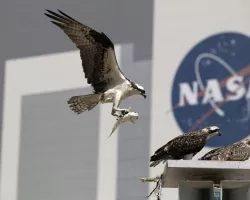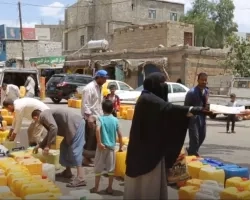The global coronavirus pandemic affects all aspects of life on Earth, including the diverse environmental factors that may affect the spread of the COVID-19 virus. NASA is responding to the COVID-19 pandemic in a variety of ways, including rapid-response funding of Earth science research. A number of ongoing Earth Applied Sciences projects have had the flexibility to pivot and include coronavirus-related topics into their research projects.
Robert Griffin of the University of Alabama in Huntsville aims to examine threats to the biodiversity of the Belize Barrier Reef, with the support of the Ecological Forecasting program area. This largest barrier reef in the Northern Hemisphere is recognized as one of the most biodiverse ecosystems in the Atlantic Ocean. Griffin and his team are reviewing how lower levels of tourism in the area impact the emissions of urban pollutants like nitrogen and phosphorus. They are tracking changes in land use and water quality by combing on-the-ground data with satellite data from missions like the Landsat series of satellites. With a decades-long record of Earth observations, the Landsat mission is a partnership between NASA and the U.S. Geological Survey. Griffin's team is also using data from the Moderate Resolution Imaging Spectroradiometer (MODIS) and the Visible Infrared Imaging Radiometer Suite (VIIRS), both satellite instruments that collect imagery and data on the Earth's land, atmosphere, cryosphere and oceans.
Pablo Méndez-Lázaro, a professor at the University of Puerto Rico Medical Sciences Campus in San Juan, is investigating how environmental factors may affect the spread of the COVID-19 virus. Supported by the Health and Air Quality program area, Méndez-Lázaro and his team have developed an air quality warning system that provides three days of advance notice about potentially harmful dust that travels to the island from the Sahara Desert. Their system incorporates data from NASA's MODIS and VIIRS instruments and information from local air monitors. Their team is now exploring if seasonal African dust that travels to the area between May and August every year will have significant impacts on morbidity and mortality associated with the virus.
All of the recent NASA Earth science projects recently awarded COVID-19 related grants are featured in the NASA.gov article, NASA Funds Eight New Projects Exploring Connections Between the Environment and COVID-19. These Rapid Response and Novel Research (RRNES) awards offer funding for rapid-turnaround projects that make innovative use of the agency's resources and data.
For updates about NASA's overall response to the COVID-19 pandemic, please visit the website: https://www.nasa.gov/coronavirus.






